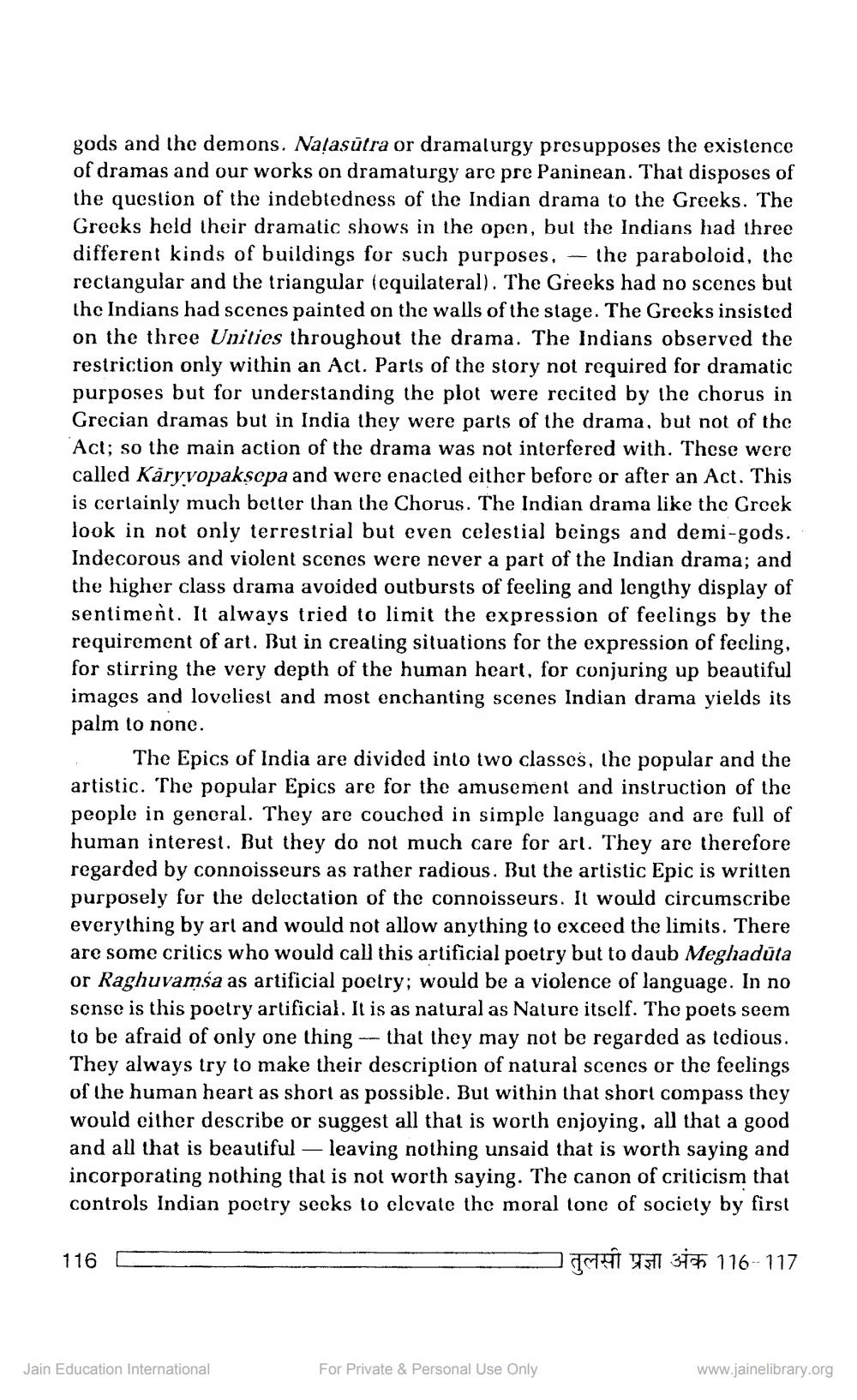________________
gods and the demons. Națasūtra or dramalurgy presupposes the existence of dramas and our works on dramaturgy are pre Paninean. That disposes of the question of the indebtedness of the Indian drama to the Greeks. The Grecks held their dramatic shows in the open, but the Indians had three different kinds of buildings for such purposes, - the paraboloid, the rectangular and the triangular (equilateral). The Greeks had no scenes but the Indians had scenes painted on the walls of the stage. The Grecks insisted on the three Unities throughout the drama. The Indians observed the restriction only within an Act. Parls of the story not required for dramatic purposes but for understanding the plot were recited by the chorus in Grecian dramas but in India they were parts of the drama, but not of the Act; so the main action of the drama was not interfered with. These were called Karyvopaksepa and were enacted either before or after an Act. This is certainly much better than the Chorus. The Indian drama like the Greek look in not only terrestrial but even celestial beings and demi-gods. Indecorous and violent scenes were never a part of the Indian drama; and the higher class drama avoided outbursts of feeling and lengthy display of sentiment. It always tried to limit the expression of feelings by the requirement of art. But in creating situations for the expression of feeling, for stirring the very depth of the human heart, for conjuring up beautiful images and loveliest and most enchanting scenes Indian drama yields its palm to none.
The Epics of India are divided into two classes, the popular and the artistic. The popular Epics are for the amusement and instruction of the people in general. They are couched in simple language and are full of human interest. But they do not much care for art. They are therefore regarded by connoisseurs as rather radious. But the artistic Epic is written purposely for the delectation of the connoisseurs. It would circumscribe everything by art and would not allow anything to exceed the limits. There are some crilics who would call this artificial poetry but to daub Meghaduta or Raghuvamsa as artificial poetry; would be a violence of language. In no sense is this poetry artificial. It is as natural as Nature itself. The poets seem to be afraid of only one thing -- that they may not be regarded as tedious. They always try to make their description of natural scenes or the feelings of the human heart as short as possible. But within that short compass they would either describe or suggest all that is worth enjoying, all that a good and all that is beautiful — leaving nothing unsaid that is worth saying and incorporating nothing that is not worth saying. The canon of criticism that controls Indian poetry seeks to elevate the moral tone of society by first
116
0
JMIT 451 315 116-117
Jain Education International
For Private & Personal Use Only
www.jainelibrary.org




